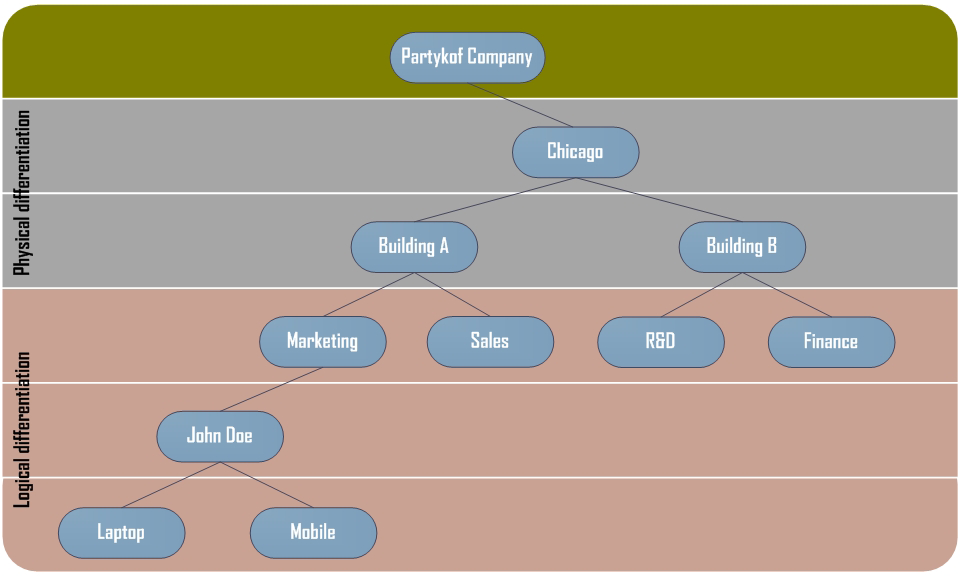IT Asset Naming Conventions
This article has been contributed by Nir Dvir – an IT Manager and blogger.
This article aims to provide a common set of guidelines for handling large numbers of records in your IT environment. Applying naming conventions to IT records such as usernames, computer names, devices and other records will allow others to understand how assets are organised and structured.
For example if your environment is spread across multiple countries or domain names one way to differentiate between elements is to use suffix names. This article is related to prefix differentiation, which can be a problem in local environments or databases.
Not much attention is given to naming conventions in the IT environment, especially when starting out small. I remember my first network carried the names of characters from Joseph Heller’s novel, Catch-22. At first it was just for fun and it was very easy to remember Yossarian, Milo, Orr, and majorx4 (Major major major major). As my network got bigger, I ran out of funny name to choose, and things started to get complicated. I started using characters from the Greek, Roman and Viking mythology, till it became a nightmare. I had to come up with a method to help me identify nodes without remembering look-up tables in my head, so I started looking for some kind of common format. This would prove very useful when I used an asset management tool.
In large network it is very common to use some kind of database to store records. Be it an LDAP (such as Active Directory), Yellow Pages YP/NIS, a DNS, a DHCP or a CMDB. This is why it is necessary to keep in your environment unique values for records such as computer names, usernames, asset tags and email addresses, so you can differentiate between them.
Reasons for using naming conventions:
- The need for standards and uniformity
- The use of logic to quickly identify objects
- Granular differentiation of elements, versions, locating and security reasons
- Uniqueness or records, in databases such as IDM, ITAM and others like those mention above
There are many ways to differentiate between elements, here are some examples:
Physical differentiation – by the location of the object such as:
- Subsidiary city
- Building number
- Floor/Level number
- Room number
- Factory line number
Logical differentiation – by the relation of the object such as:
- Ownership – Owner user, Department, Organization Unit or Cost centre
- Type- Printer, Server, Computer, Switch, Filer, Desktop, Laptop, Phone or Tablet
- Function – Email, DB, Web or File Servers
- Permissions – Anonymous, Standard, Administrator user and so
Here are some examples that might clarify naming conventions. First examples relate to users and employees names. I’ll use my domain as an example but it can be any domain. The primary objective is to have uniformity in the convention when selecting computer names, usernames, email addresses or any other identifies, as they may affect the use in an Identity management tool.
Let’s take John Doe For example, let’s say that John belongs to our Chicago office, his office is in building A, he works in the marketing group, and he has a laptop, a portable projector and a mobile phone.
His employee name – Should be recorded as John Doe, not john doe, John doe, Dow john, J0hN doW! or any other combination. If you have another John Doe in your company, you may use his middle initial or any other distinguishes.
- His user name – Can be set by using his Surname and a first letter from this First name such as doej or the other way around johnd or b adding another identifier, Doej01.
- His email address – should be set from his employee name, such as John.Doe@partykof.com.
Notes:
- You should avoid using his username as the external email address as it can giveaway his username, which makes it easier for hackers to brute force their way in.
- I prefer using the dot (.) to differentiate between first name and Surname and reserve the underscore (_) to differentiate between different names, and the dash (-) for concatenated surnames. For example John_Michael.Doe-Benz@partykof.com
- In cases where the user has a very long name, such as John’s it might be wise to shorten the email address, JM.Doe-Benz@partykof.com
Now for John’s devices, a little background might help us decide on suitable names for his devices.
His devices might be named as:
His Laptop – chamkt-doej-lt
His Projector– chamkt-doej-pj
His Mobile Phone – chamkt-doej-mo
I used the following schema:
CH for the Chicago branch
A for building A
MKT for marketing
DOEJ for his username
MO for mobile, PJ for projector, LT his laptop.
Some other devices around John might be:
chamkt-prt1 – his departmental printer
chamkt-plt1 – his departmental plotter
chamkt-fs1 – his departmental file server
cha-sw-core1 – his building network core switches
ch-srv-ex1 – his branch exchange server
Other areas in IT where you can use naming conventions in a similar concept are:
- Storage Systems – Filers, Aggregates, Volumes, Luns, Folders
- Storage Networks – Fabrics, Zones, Switches, WWNs, WWPNs
- Networks – WAN and LAN elements, VLAN, VPN, DMZ, firewalls, Routers, Access Points.
- Applications – Databases, Tables,
Now remember, these are only examples. You should choose your own schema for your naming conventions as it best suites your organization. There are, however, some basic rules you should comply with.
Basic Rules
- Avoid using non-alphanumeric characters use only letters (A-Z) and numbers (0-9) in your computer names. Underscores and other characters may cause problems with DNS services.
- Use up to 15 characters for computer names, as some services such as NetBIOS and WINS are not compatible with more.
- Avoid using duplicate names, even if they are in different levels, which are permitted. In some cases they can cause mix-ups, such as in the case of AD forests and OUs
- Avoid schemes that will lock you in cases of mergers
- Although AD supports it, a user name should not contain a space: for example, user name; as many systems do not support it.
Other Guidelines
- Keep names short and meaningful as possible
- When using usernames within the computer name, remember to change the computer name when you assign it to a different user.
- Build your naming conventions in a top to bottom hierarchy, your prefix should start with the top element.
Some References:
- Naming conventions in Active Directory for computers, domains, sites, and OUs
- Special characters in user ID and passwords
Summary:
Naming records in a consistent and logical way will help distinguish between records in a glance. Naming records according to agreed conventions will make naming records much easier for all IT parties, it will streamline adoption of management application or new systems and allow a simple expansion of your organization.
This article has been contributed by Nir Dvir – an IT Manager and blogger.
Can’t find what you’re looking for?
More from ITAM News & Analysis
-
ITAMantics - April 2024
Welcome to the April 2024 edition of ITAMantics, our monthly news podcast where we discuss the biggest ITAM stories from the last month. George is joined this month by AJ Witt and Ryan Stefani. Stories tackled ... -
Broadcom is removing expired VMware licences from its portal - take action now!
Hot on the heels of Broadcom’s announcement of the end of perpetual licences for VMware it has given customers barely a week to download any keys for licenses from its portal with expired support. This is ... -
Who Loses When Broadcom Wins?
News of a new Broadcom deal rarely arrives with great fanfare. The November 2023 VMware acquisition provoked open worry online and in business circles, with many critics wondering whether the former Hewlett-Packard spinoff’s reputation would prove ...

